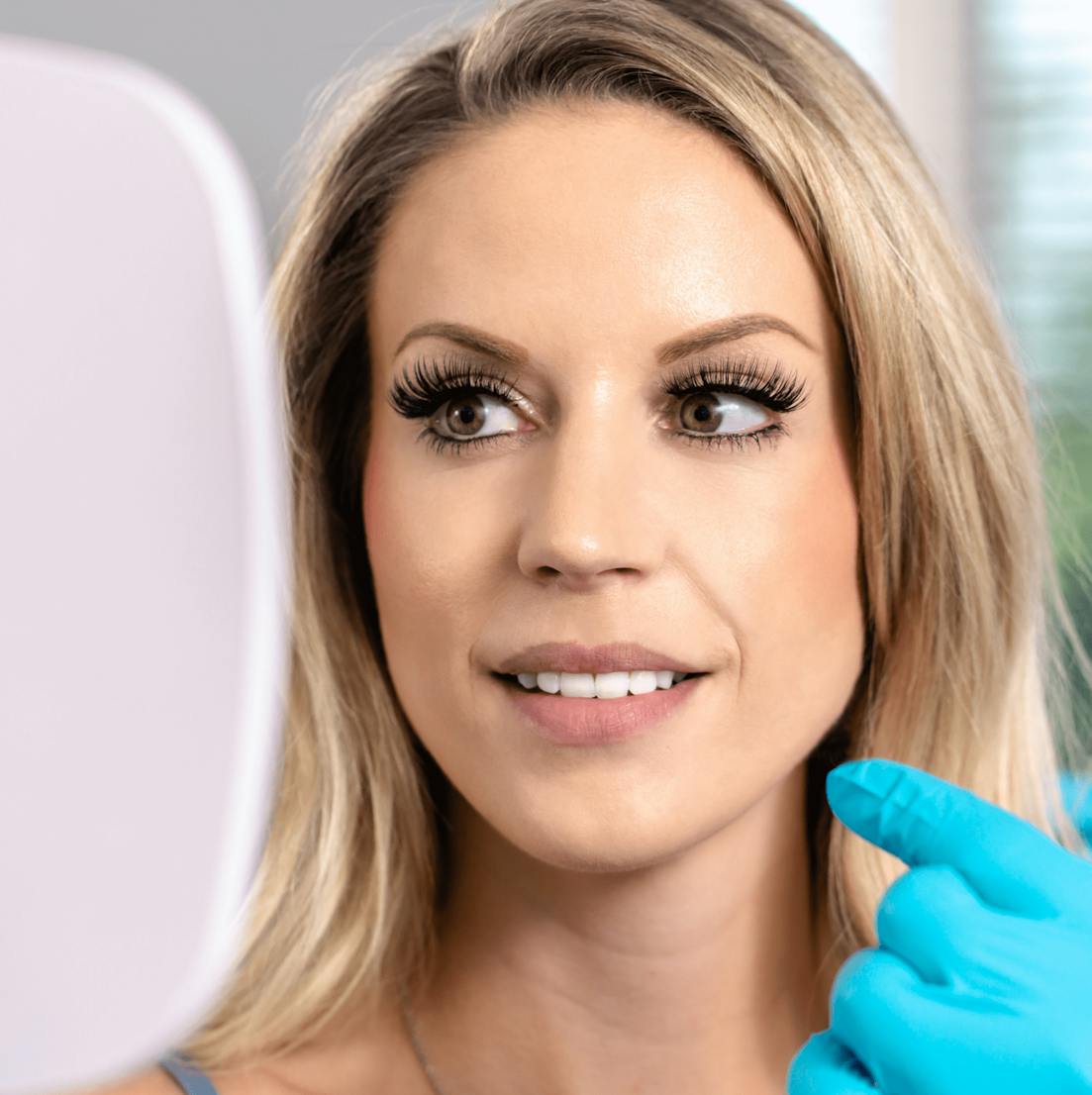Begin your journey.
Your journey to a happier, more confident life starts with a private, in-depth consultation with your surgeon, where we learn about you and your vision and goals. Discover San Antonio’s premier clinic for plastic surgery.
 What is the fastest way to recover from a nose job?
What is the fastest way to recover from a nose job?
We get this question all the time from those preparing for rhinoplasty surgery. Naturally, patients want to see their results as soon as possible — and be able to show them off in public!
It’s important to know that rhinoplasty recovery takes time, however. Moreover, not all patients will experience rhinoplasty recovery at the same rate. Some patients may require more time because their surgery was more invasive while others may require more aftercare for other reasons such as their overall health or because they are undergoing revision rhinoplasty.
Still, there are some steps that nearly all patients can take to speed up their recoveries as much as possible without compromising their well-being or results. Let’s take a look at 6 tips that will go a long way in improving your rate of recovery after rhinoplasty.
Rhinoplasty recovery is all about babying your nose and keeping it from being jostled too much or exposed to anything that may exacerbate pain, swelling, fluid retention, or trauma.
This means you need to take it easy overall. No strenuous exercise. No lifting anything heavy. No running or jumping. And — at least for the first few weeks — no blowing your nose.
While it may seem benign, blowing your nose can cause unintended bleeding and may disrupt the precarious internal structure of your nose that is still healing.
As with other surgeries like facelifts, brow lifts, and neck lifts, the sun is not your friend during rhinoplasty recovery. Stay indoors, or if you must be outside, properly shade your nose and face with a wide-brimmed hat or umbrella.
Sunlight will not only make any rhinoplasty scars more prominent, but it can also cause an easy sunburn. Your skin will generally be more prone to sunburn during your rhinoplasty recovery.
Reducing swelling is the name of the game during rhinoplasty recovery. You can do this in many ways.
First, many plastic surgeons recommend using cold compresses on your face. You don’t want to use the cold compress directly on your nose.
Rather, avoid touching your nose at all, and instead, apply your cold compress to your cheeks. This can help to reduce swelling overall and may also feel good if you are experiencing any discomfort.
You should also keep your head elevated to reduce swelling. Likewise, avoid any warm and moist environments (steamy showers, saunas, hot tubs, etc.) as the heat can cause additional swelling of the nasal tissues.
All plastic surgeons are different when it comes to the medications they prescribe for their rhinoplasty recovery patients. Most surgeons will prescribe at least one pain medication and an antibiotic to be taken right away after surgery. Other surgeons also add medications that can help with reducing swelling and bruising.
So, how painful is rhinoplasty recovery?
For the most part, recovery from rhinoplasty is uncomfortable enough to warrant taking a prescription pain medication for at least the first three to four days after surgery. After that, most patients are able to switch to an over-the-counter pain medication.
Eating a nutritious diet and getting adequate exercise is always a good idea, but these habits can be especially important during rhinoplasty recovery. While you certainly do not want to exert yourself through exercise, once you get the go-ahead from your surgeon, some short and gentle walking can do your body good.
Likewise, eating plenty of lean protein, vegetables, fruits, whole grains, and healthy fats will keep you healthy from the inside out. And lastly, don’t forget to stay hydrated with plenty of water.
While celebrities may be able to hire professional help after their nose jobs, most people will need to ask for help from family members or friends.
Once you know the date of your surgery, you can ask loved ones for assistance in the form of meal preparation, grocery shopping, running errands, and doing household chores. You might even enlist someone to help take care of you and your bandages and dressings — plus other basic things like getting dressed and getting around.
Setting this up as soon as possible and getting several friends or family members to rotate their assistance (as opposed to having just one person do it all) can make your recovery experience smoother, faster, and more tolerable overall.
Is rhinoplasty a hard recovery?
It can be difficult to predict how every patient’s recovery experience will be. For the most part, while patients will experience some discomfort, the pain from recovery should not be severe. However, there will be significant bruising and swelling.
One downside of recovery is that it can last a long time. Patients may have minor residual swelling for up to one year.
How long does a nose job take to heal?
A “nose job” (rhinoplasty) takes about three months to appear healed overall, with most of the swelling gone. Some patients may have persistent residual swelling for up to a full year, however.
After about three to four weeks, patients generally feel okay going out in public. This is when most or all of the bruising and much of the swelling will be gone.
When will you know if you need revision rhinoplasty?
Most plastic surgeons require their patients to wait at least 12 months before thinking about revision rhinoplasty. While you may already be unhappy with your results before a year’s time, swelling and other factors may still be altering the appearance of your perfect nose. So, it’s good to wait it out and be sure.
Furthermore, revision rhinoplasty cannot be performed until at least a year has passed after your original surgery.
What is the revision rhinoplasty recovery timeline?
Revision rhinoplasty may take longer to heal because the patient will have scar tissue from the previous surgery, and this will require additional healing time. Swelling may persist for up to a full year, though most of it will dissipate within four to six months.
 Eager to enjoy your results from rhinoplasty surgery?
Eager to enjoy your results from rhinoplasty surgery?
Take your first step by booking a consultation appointment at Hill Country Plastic Surgery, San Antonio’s premier cosmetic and reconstructive surgery practice. Dr. Scott Farber will guide you step-by-step through the rhinoplasty process, providing you with everything you need to know about optimizing your procedure and achieving efficient results.
Call today to schedule your appointment!
https://www.mayoclinic.org/tests-procedures/rhinoplasty/about/pac-20384532
Your journey to a happier, more confident life starts with a private, in-depth consultation with your surgeon, where we learn about you and your vision and goals. Discover San Antonio’s premier clinic for plastic surgery.

© Hill Country Plastic Surgery. All Rights Reserved.